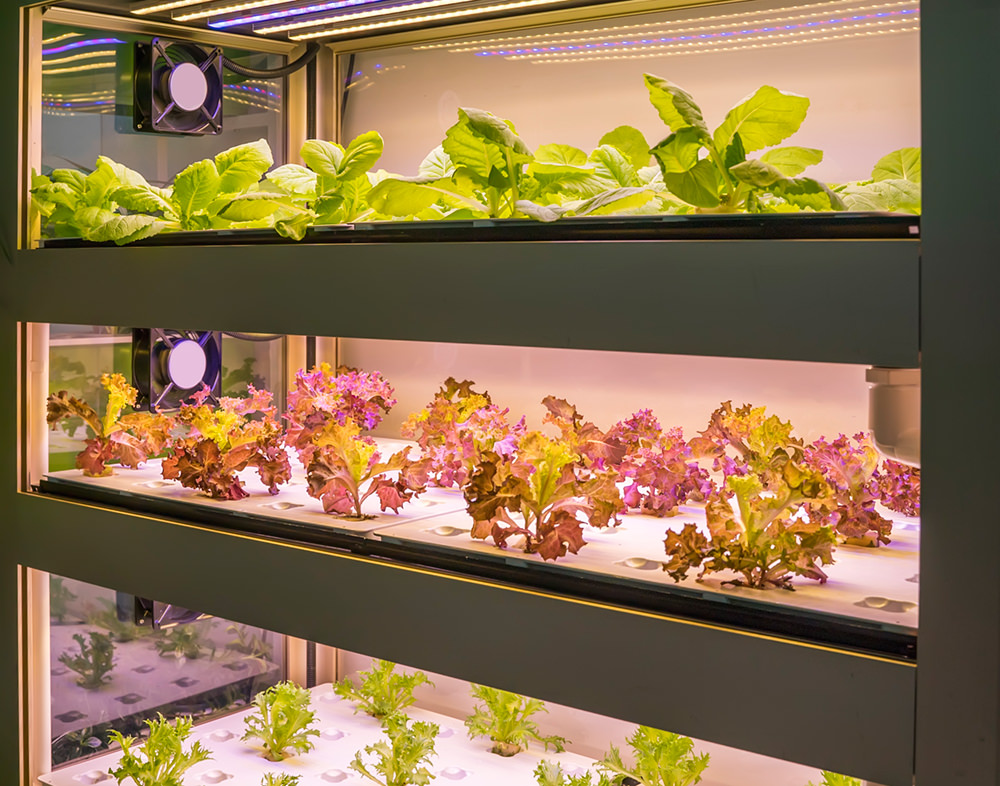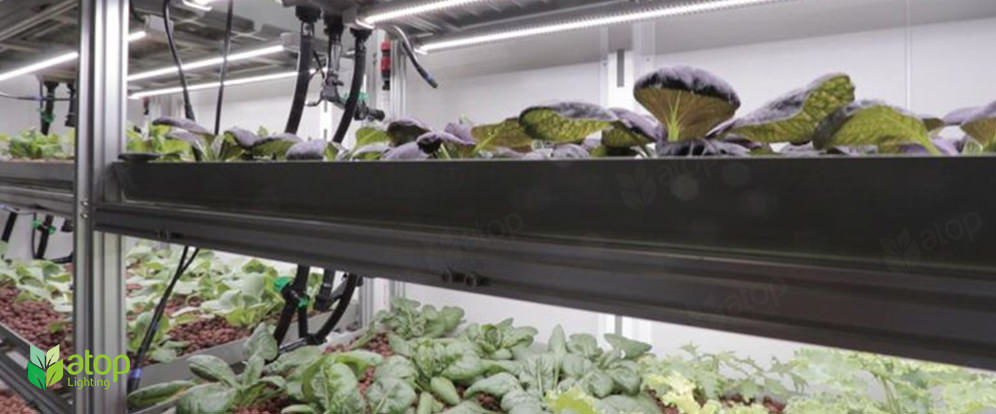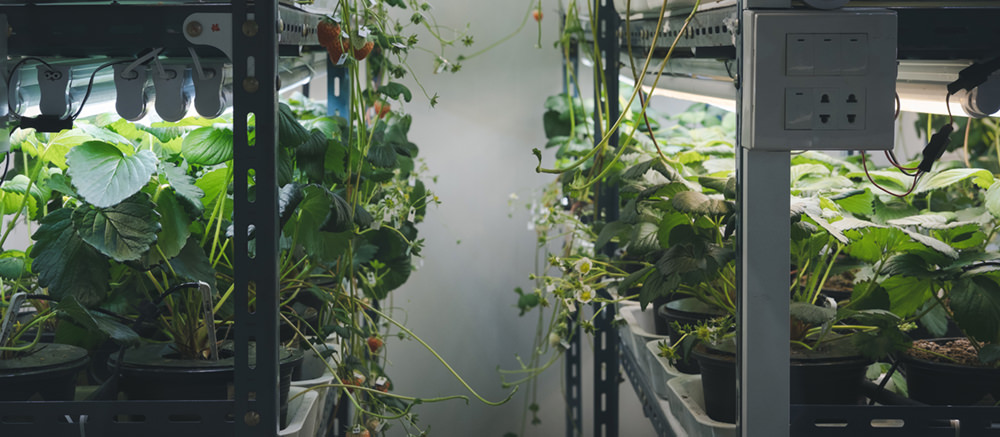The Most Profitable Crops to Grow in a Vertical Farm
The growth in population and the shortage of arable land around the world are becoming worse and worse. This also results an increasing demand of food production in urbanized areas. Vertical farming is one of the most effective ways to grow more crops in fewer spaces. It can use shipping containers, buildings, or warehouses in urban areas to grow crops. Vertical farming enables year-round production of local foods, such as leafy greens and herbs. Farmers want to reap more profits and reach financial success by implementing vertical farming. But not every crop is economically viable to grow in a vertical farm. When cultivated indoors, multiple environmental factors, such as photoperiod, light spectrum, light intensity, temperature, and humidity, must be carefully controlled to provide an optimal environment for crops. This requires high upfront investments and maintenance costs. Therefore, farmers should be cautious when deciding which crops to grow.
Today, we will discuss some considerations when choosing crops to grow in a vertical farm and the most profitable crops for vertical farms.

What is vertical farming
Vertical farming is the practice of producing crops vertically. It allows more efficient food production. Vertical farming also enables year-round production. There are huge differences between vertical farming and traditional farming. To begin, as the name implies, vertical farming involves growing plants vertically to conserve space while increasing yields. Next, vertical farming cultivates plants without soil. The three common soilless cultivation methods include hydroponic, aeroponic, and aquaponic. It is said that vertical farming can save up to 70 percent of water than conventional agriculture. Thirdly, vertical farming is coupled with advanced technologies, such as LED grow lights and rotating beds. Last but not least, vertical farming aims at sustainability.
Considerations for choosing crops
In theory, nearly any crop could be grown on vertical farms. But not all crops are profitable in your vertical farms. It is important for commercial growers to consider their options and choose crops that can earn the best profits. To choose the most profitable crops, some considerations should be taken into account.
Crops’ stature
The distance between layers may be short for some crops. Thus, short stature crops are more suitable to grow in vertical farms. The taller crops will reduce the space efficiency. Moreover, distances between grow lights and plants should be kept in a suitable height. Otherwise, crops will be burned due to the heat and high light intensity if they grow too close to the light.
Production cycle
The production cycle of crops could be weeks, months, or even years. The longer it takes to produce a crop, the higher electricity and operation costs for providing an optimal growing environment for crops. These include the costs for lighting, heating, and ventilation. In contrast, a shorter production cycle means growers can harvest more times in a certain period.
Harvestable yield
The harvestable yield is the amount of the crop that can be harvested per unit area of land. It is usually lower than the crop yield because some parts of the crops are discarded or wasted during harvesting or post-harvesting processes. Some crops, like lettuce, have a very high harvestable yield because almost the entire plant can be sold or used. High harvestable yield is an important factor for crops that are grown for commercial purposes, as it affects the profitability and productivity.
Market demand
Vertical farms have many advantages, such as year-round production and higher yields. However, they also need to consider the local food culture and market demand. Growing crops that are not popular with or suitable for the nearby consumers can lead to waste and loss. Moreover, transporting crops over long distances can affect their freshness and quality. Therefore, vertical farmers should choose their crops wisely and strategically.
Condition of your vertical farms
There are many profitable options on the market, but not all of them are profitable for your vertical farm. The right choice of profitable crops should depended on the growing space, locations, and level of automation of your farms. Consider whether your vertical farms can provide sufficient space, heat, light, water, and nutrients for the crops you want to plant. Further more, consider whether there is enough staff to grow crops.
The most profitable crops for vertical farms
Leafy greens and herbs are the most common crops to be grown in vertical farms. They are fast-growing and reliable, and there is high demand on the market. Most importantly, they can ensure profits. Thus, 57% of indoor farms grow leafy greens. However, times have changes. More plant types are available in vertical farms, and they are also profitable. Here, we will show you some of the most profitable crops for vertical farms.
Leafy greens
Similar to herbs, leafy greens are always good choices for profitable vertical farming. Leafy greens are easy to grow and there is consistent demand all year round. Lettuce is the most popular choice among all leafy greens. The demand for cannabis and other medicinal crops has soared in the past few years. They can be lucrative crops for some growers. Other leafy greens like chard, kale, and spinach are also great options for indoor farming. Because they are preferred for salads and sandwiches.
Leafy greens and herbs are the most common crops to be grown in vertical farms. They are fast-growing and reliable, and there is high demand on the market. Most importantly, they can ensure profits. Thus, 57% of indoor farms grow leafy greens. However, times have changes. More plant types are available in vertical farms, and they are also profitable. Here, we will show you some of the most profitable crops for vertical farms.

Herbs
Herbs are always popular crops in indoor vertical farming. Many herbs are compact and fast growing. Because they are quick growing, you can sell more products each year. Although some herbs tend to grow a little slower than leafy greens, they also offer a higher profit margin. Therefore, herbs are profitable crops for vertical farms. Common herbs for vertical farms include basil, mint, chives, and parsley.
Mushrooms
Mushrooms have been able to grow in large-scale production in vertical farms. They will soon become standard vertical farming plants. The demand for healthier and tastier mushrooms is increasing, but the market is untapped. Since mushrooms are not common on vertical farms, farmers who capture this market may reap high profits. It is estimated that a mushroom farm can make a profit margin of over 50 percent on its gross margin.
Strawberry
Strawberries are high-value crops, and they command a premium price. That means vertical farms can generate significant revenue from selling strawberries. Strawberries can also be grown year-round in vertical farms with controlled environments. As they are not limited by seasons or weather conditions, they can produce multiple harvests per year. Furthermore, strawberries grow well in hydroponic systems.

Peas
Peas can grow well in hydroponic systems, and they are common in vertical farms. Peas have a short growth cycle of about eight weeks, which means growers can achieve multiple harvests per year. Moreover, peas grow healthier when grown vertically, as they have better airflow around the leaves. Considering that peas have a very high nutritional and market value, growing peas in vertical farms might have massive earning potential.
Herbs, leafy greens, mushrooms, peas, and strawberries are the most profitable crops in vertical farms. But whether vertical farms are profitable depends on various factors, such as the initial investment, the operating costs, the market demand and price, customer satisfaction, etc. Vertical farming also has some challenges and risks, such as the high energy consumption and technical complexity. Vertical farming requires careful research and planning to ensure its success.


